Golf’s Great Optical Illusion
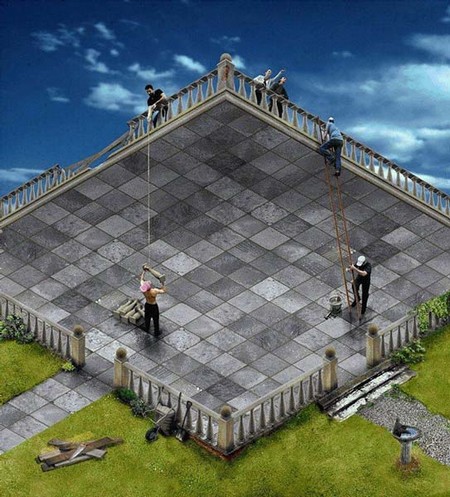
Probably the greatest fault that everyone who doesn’t play golf for a living makes is aligning themselves incorrectly. Before we’ve tried to make any move on the ball, we are lined up in a way that makes it extra hard for our body to make a good golf swing, no matter how much we’ve worked on our form or technique. That may sound crazy, but if you watch the greatest pros when they practice on the range, they almost all lay down a club or alignment stick… not because they’re forgetful or idiots, but because there is an optical illusion in golf that is really hard to make your brain believe.
One of the easiest ways to see it is to find a relatively straight section of cart path, and stand on one side of the cart path—left side if you are right handed, right side if you are left. Now, imagine that you are holding a monster long driver that would reach across the cart path, and your ball was teed up on the other side of the path from you. If you take a look down the cart path, your intended target would be on the line of the other side of the cart path. If you are right-handed, that would look out to your right. If you imagine taking a swing with that monster driver, and trying to get the ball started on the line of the other side of the path, you’ll see what I mean. You will feel like you would really have to swing out to the right to get it going online. It’s the same thing with your actual clubs.
So, on the course, it’s a really good idea to get directly behind your ball when you are looking at a shot, and pick out a couple of targets inline between your ball and your target. I like to try to pick out something in the 5 to 10 foot range in front of my target, and then maybe something 30 yards out. When I then take my practice swings, I try to do that behind the ball, swinging out to the right (it will feel like swinging out to an imaginary second baseman) towards those intermediate targets I have picked out. I then set up to the ball, with my feet parallel left of the target line, give those intermediate targets a glance, glance at the target and start my takeaway.
For me, the times I get in the most trouble with loss of height, distance and accuracy with all of my clubs, and even my chipping, is when I don’t setup to swing out to my right, but somehow try to swing towards a target that is on my toe line. This leads to a pull across the ball every time. And so, I try to work on this every time I’m at the range or playing; and I hope this idea can help you too.



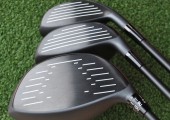
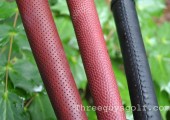

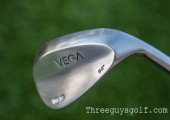
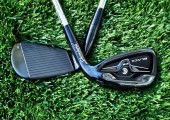
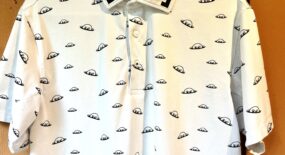

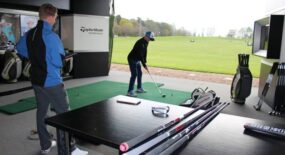
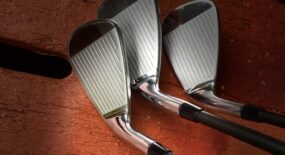
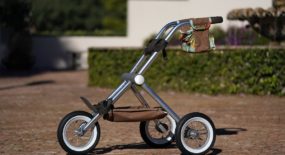
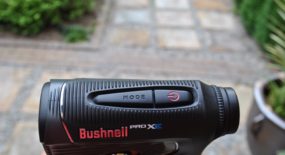

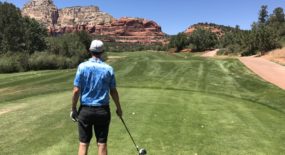
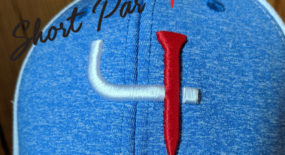

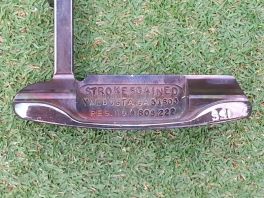
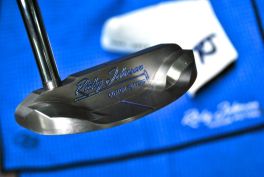
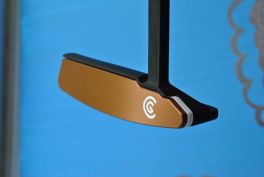

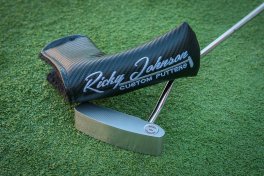
It is crazy that pro use alignment sticks like 75% of the time and we hardly ever do. Outside of laziness, is there some reason we choose not to use a technique that every pro swears by?
For me, I think I never really understood why pro think they are so important. Not that it should matter as they clearly know more than me. Perhaps it is time for me to just trust that they know best.
I agree 95% of all right handed player I teach initially aim some degree to the right of target. When properly aligned with feet parallel left of target, any intermediate target (on the target line out a few yards in front of the golfer) will appear well to the right of the target. This is due to viewing the intermediate target from an angle since we stand on the side of the ball. This is called a parallax or where an object seems to have changed positions when viewed from different angles.
Once a player is aimed good, then we get them to focus on starting the ball to the right of target line and curve back left but not past the target line. Jack Nicklaus practiced by having start lines and end lines for the shape of shot he hit. In the 1986 Masters victory, he only crossed his lines 4 times the whole week which is incredible. No wonder he won so many times.
For my own game, I have played the est when my only thoughts are being aimed well and starting the ball on correct line and not let t curve past my end line.
Great topic that more people should focus on, they would be amazed how more accurate you can be using this type of practice.
I agree, but actually it’s even more difficult to aim properly because the spot on the target line (from ball to target) is viewed from eyes inside the target line – so when you try to hit your 6 iron over a spot on the target line you have to hit over the spot as viewed from from the ball position and not your eye position – this explains why Nicklaus picks a spot so close (sometime 1 ft or 18 inches) in front of the ball – the pros are constantly practicing alignment.
Hi Charlie, thanks for the comment! I use Jack’s technique just the way you are describing. Intermediate targets that are close and midway along the target line are the only way that I can keep looking where I want to swing. It gets really tough on those perfectly manicured courses, where it’s hard to keep your eyes on that one blade of grass : )
A good drill I find is to first make sure my spine angle (bending forward) is forward enough. Hardy talks about feeling as if you are going to fall over forward. Kuchar does this on set up, actually starts to fall over and rocks back to an acceptable balance point. From there, it’s interesting to try and swing the club as far right as you can, or ‘inside out’..it’s amazing how far you have to go to risk hooking, everything else on plane, grip, head position, turn and balance considered. Most times I try to hook it from there, it goes dead straight, and long.
Hey Michael, thanks for your kind comment and for your thoughts on the drill! We really appreciate your feedback, and your experience working on this. I teach and try to emulate the Ballard method, where we stand as tall as possible in the swing, a la Annika or Rocco. So we actually try not to swing the club inside out because we don’t let the club get behind us the same way. But I understand the difference with the Hardy and Kuchar swings, and am grateful that you brought it up.
Wade